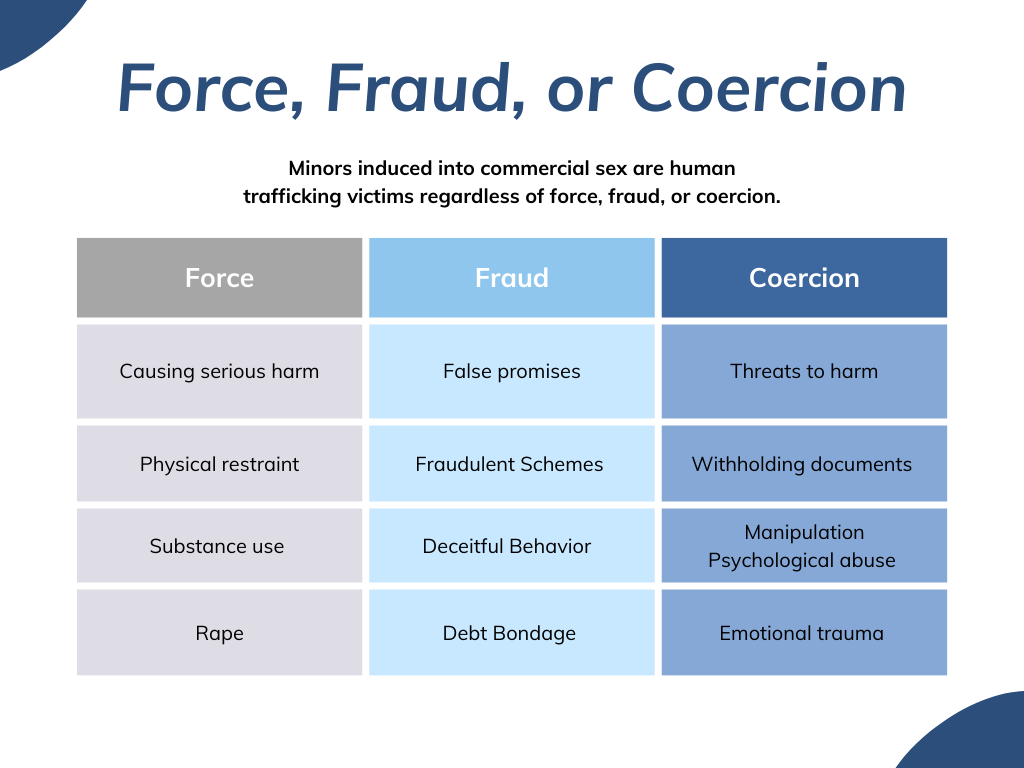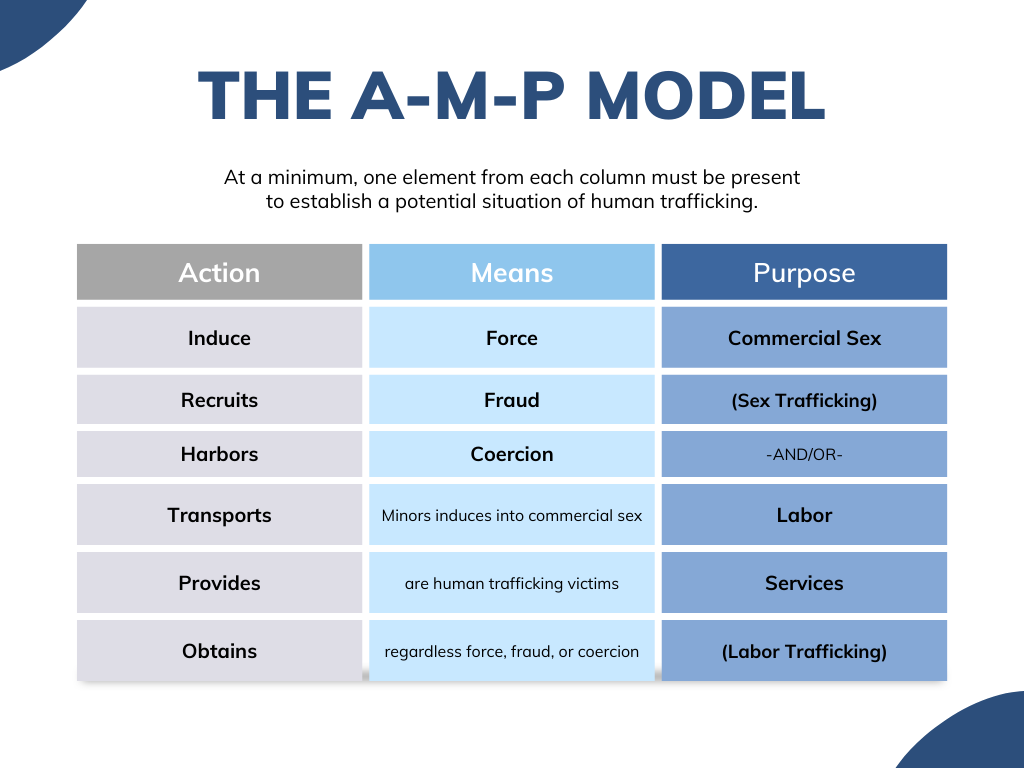Human trafficking is a severe form of exploitation involving force, fraud, or coercion. Traffickers profit at the expense of their victims by compelling them to perform labor or to engage in commercial sex. Labor Trafficking Individuals perform labor or services through the use of force, fraud, or coercion. Labor trafficking included situations of debt, bondage forced labor, and involuntary child labor. Sex Trafficking Individuals perform commercial sex through the use of force, fraud, or coercion. Sex traffickers frequently target victims and then use violence, threats, false promises, debt bondage, or other forms of control to keep victims involved in the sex industry for the trafficker’s profit.
Force, Fraud, or Coercion
Minors induced into commercial sex are human trafficking victims regardless of force, fraud, or coercion.

Actions-Means Purpose
At a minimum, one element from each column must be present to establish a potential situation of human trafficking.

Risk Factors
- Sexual abuse
- Physical abuse
- Abusive relationship
- Neglect
- Runaway/Homelessness
- Identification as LGBTQIA+
- Mental health
- Unaddressed trauma
- Disability
- Poverty / Financial hardships
- Substance use
- Exposure to violence
- Proximity to borders
- Adult sex industry
Facts:
- In 2021, the National Human Trafficking Hotline received 13,227 signals from victims and survivors of trafficking in the United States.
- 10,360 cases were identified in 2021 by the National Human Trafficking Hotline.
- 7,499 of the cases identified were classified as sex trafficking.
- 6,642 of the victims identified were adults and 2,365 were minors.
- 8,142 of the victims were females. 1,292 were males. 132 were part of a gender minority.
- 602 signals were received from Colorado.
- The Colorado 24/7 Human Trafficking Hotline experienced a 12.4% increase in calls from 2021 to 2022.
For more information and resources about Human Trafficking visit:
